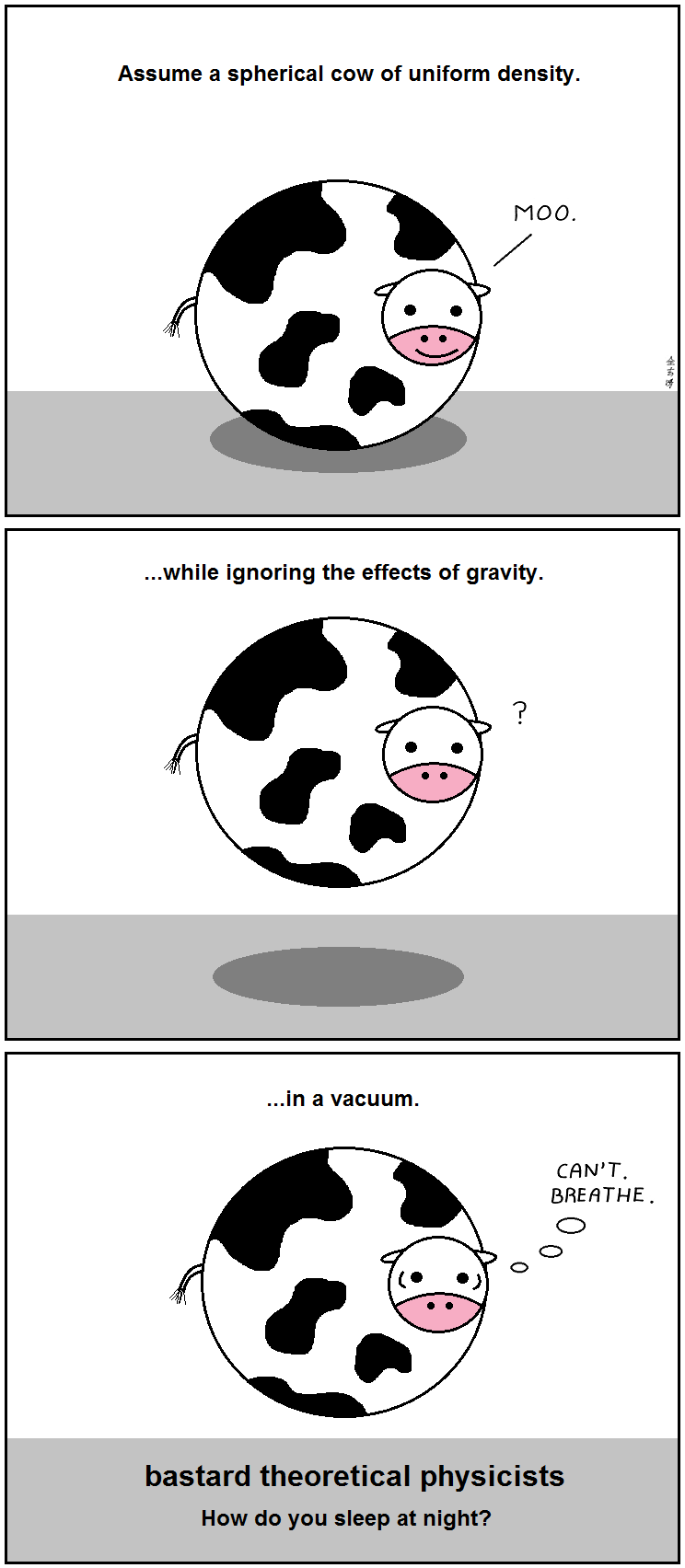Our boy, AG, is referring to a joke: a dairy farmer asks a physicist how to estimate milk production. The physicist begins the calculations with, “Assume a spherical cow,” and takes it from there.

Physicists are famous for this. They call it simplifying the model. Sometimes they have a problem that’s too complicated to be calculated from the bottom up — say, climate change. So they make a model in which they simplify the parts — an average atmosphere, an average land, an average ocean. Change one of these averaged parts — make the atmosphere more likely to trap heat — and see how the whole climate responds.
I think in the case that AG presents, the problem is not milk production but something like the distance a cow can be catapulted. On the whole, simplifying the model is good for finding out roughly where the answer might be. But it might be hard on the cow.
______
I think I see Australia.
This cow looks like it is holding its breath. The correct thing for a mammal to do if sucked into space is try to breathe normally. This will prolong life for moments longer.
Dear Noneyourbusiness, really, I’m delighted that you’re bringing a little realism into this enterprise.
There is another level of meaning to “assume a spherical cow”. In science we still use the idea of a thought experiement, or as us older types would say “Gedanken”.
Here is a good example of a Gedanken that I use in my ASTR101 classes. What is the cause of the seasons? Most of my students think that summer is hotter because the Earth is closer to the Sun. Okay, assume that it true. Now, in the Southern Hemisphere, the seasons are reversed, and summer is in January. But that means that the earth must be closest to the Sun in June and January, which is impossible. So the reasoning is wrong.
Often in a Gedanken we seriously simplify the problem to see if we are even in the right ballpark. So assuming a spherical cow really does not sound ridiculous if it leads to an order of magnitude estimate.
How is a gedanken experiment different from coarse-graining? I think it must be but I don’t know enough about the instances in which each is used to figure out how.
Ann, I have never heard of course-graining. (quick trip to Google- ah! I see…). A gedanken is similar, but it is more a *thought* experiment, and one that is easily done in your head. They usually end in a contradiction, as in the Earth being closest to the Sun twice in its orbit. These were used all the time in my theory classes in physics. Bohr and Einstein gave each other gedanken challenges over the meaning of quantum mechanics. One led to the EPB paper showing that two particles can be separated by the whole Universe and yet instantly communicate their quantum state to the other one. Einstein thought this would show that QM required more “fine-graining” in your terminology. But it became the basis for Bell’s Theorem which led to quantum entanglement and now quantum computing.